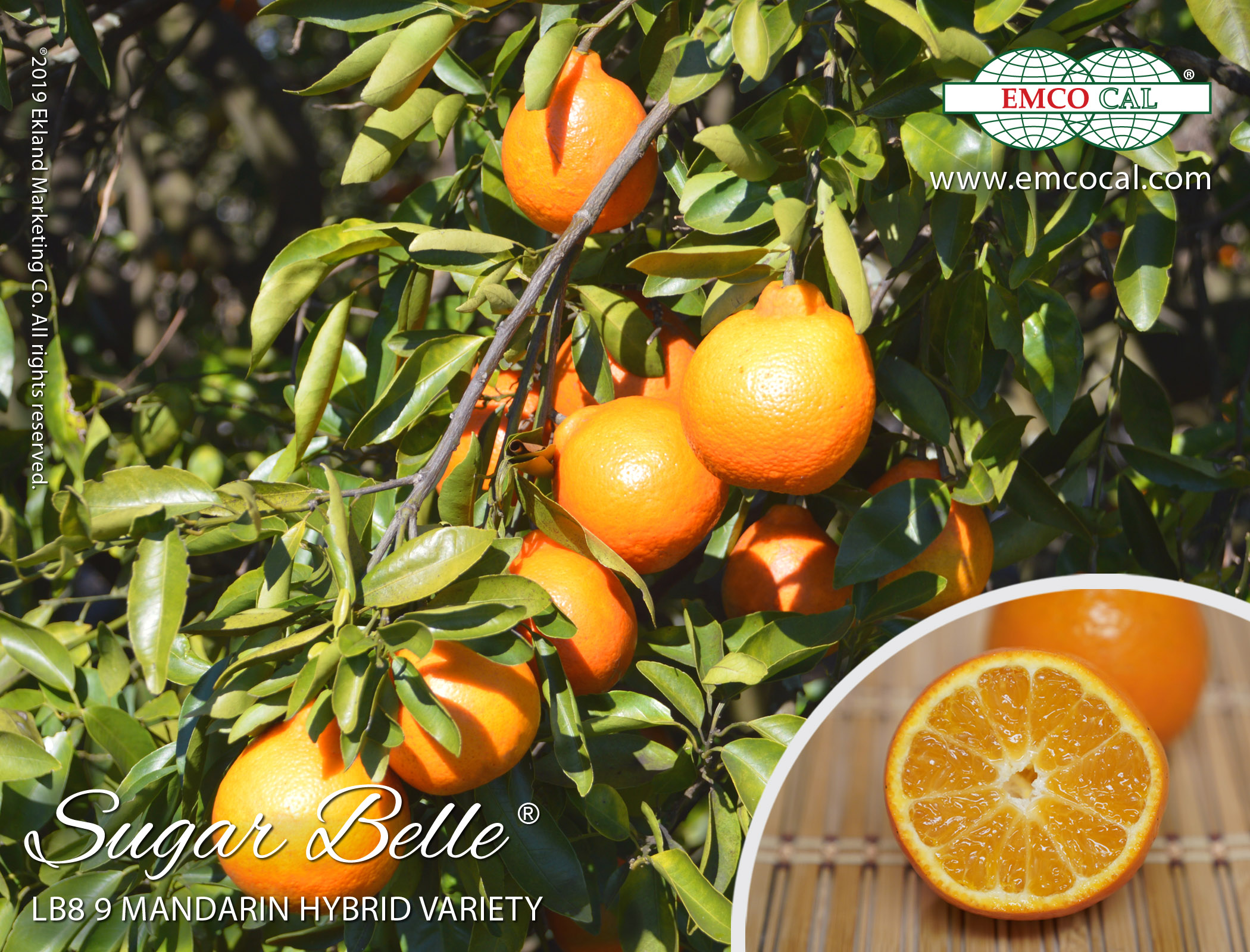Sugar Belle®
(LB8 9 Mandarin Hybrid cv.)

Attributes:
- Excellent disease resistance
- Excellent eating quality
- Deep orange exterior and interior color
- Juicy fruit of medium size
- Mid-season fruit maturity
- Low to no seed count
- Fresh fruit market
Fruit Characteristics
The LB8 9 variety, known under the Sugar Belle® brand, is a conventionally bred mandarin hybrid that combines the shape and appearance of a tangelo with the size and deep orange color of a clementine. Dr. Fred Gmitter and his team of scientists at the University of Florida (UF) selected the LB8 9 variety for its excellent taste and disease tolerance.
The Sugar Belle® brand mandarin hybrid earned its name because of its distinct flavor and aroma that scored high in several consumer taste panels around the US. Its intense sweetness (14.2 Brix) balances very well with the acidity and tartness. The LB8 9 variety produces high levels of vitamin C – approximately 40% higher than most commercially available fresh citrus varieties.
The LB8 9 mandarin hybrid variety appears in a beautiful deep, bright orange external and internal color. The fruit is juicy and best handled by slicing. With the right management technique, very low to no seed numbers can be achieved. The fruit size varies between 70 mm and 130 mm depending on tree crop load. Depending on the rootstock, the Sugar Belle® brand matures in late November to early January, making it an excellent choice for the fresh fruit, winter holiday market.
Plant Characteristics
The LB8 9 mandarin hybrid variety distinguishes itself by its dense foliation and elongated, cupped-up leaves with smooth edges. The tree has an upright, vigorous plant habit that grows in an oblate shape.
Within the first two years, trees of LB8 9 variety can grow over 2 m in height. The trees may be slow bearing, producing their first set of flowers in year four. Growers can alter that date through the right management techniques, including rootstock choice and girdling.
After a heavy crop season, fruit counts may decrease. These variations occur by tree or on a limb by limb basis. Growers in Florida generally have reported consistent yields in their commercial orchards of the LB8 9 variety.
The LB8 9 mandarin hybrid variety is self-pollinating and needs to be managed to minimize cross-pollination.
Field Production
Growers can amend the first fruit onset through trunk girdling. This technique is used in the fall to control the plant vigor and initiate new flower onset in the following spring. It has been observed that certain rootstocks tend to bring the trees into bearing earlier than others.
Cross-pollination can cause the development of seeds in the fruit of the LB8 9 variety. Growers can significantly reduce the number of seeds – even produce a majority of seedless fruit – by growing the plants in solid blocks, avoiding cross-pollination. Growth regulators such as gibberellic acid can increase the fruit set and will also limit seed development.
Disease Resistance
The LB8 9 mandarin hybrid variety is very tolerant of Alternaria Brown Spot, a pathogen that severely attacks the foliage and fruit of many common mandarin varieties. Particularly noticeable is the variety’s strong tolerance to Huanglongbing (HLB), also known as Citrus Greening. The LB8 9 variety is considered the most HLB-tolerant citrus cultivar currently on the market.
*Characteristics may vary depending on weather conditions, rootstock and location.

